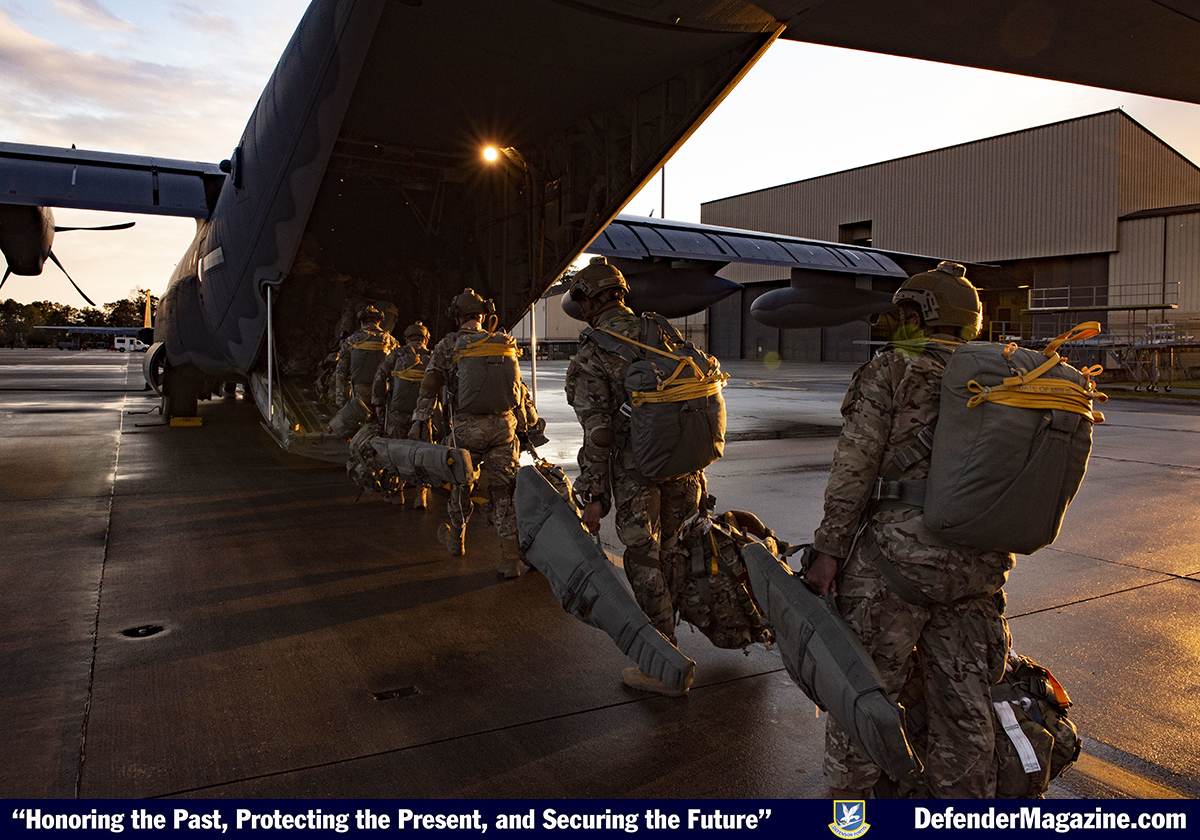MOODY AIR FORCE BASE, Ga. — Before the bustling sounds of ground crews and screaming fighter jet engines filled the air around a remote airfield, the droning turboprop engines of a single HC-130J Combat King II first broke the nighttime silence.
As the aircraft flew over the training range, 29 Airmen from the 820th Base Defense Group silently drifted to the ground by parachute and quickly got to work.
The concept brings multiple squadrons together for deployment under the command of a lead wing, which may or may not be the wing they normally report to, allowing them to train as a team before heading downrange. This provides theater commanders with a wing-echelon unit that’s organized, trained, and equipped to generate combat power at the speed of relevance in a contested environment.
Lead wings are a resilient, adaptive and proactive force able to operate with joint and coalition partners. The 820th BDG fits into this mission using Airmen from multiple career fields to secure airfields in small or large teams that can operate independently.
“This was our first exercise in Air Combat Command’s lead wing concept, and it definitely helped to inform when and how the BDG is employed,” said Lt. Col. Dan Minnocci, airborne mission commander for Mosaic Tiger 21-1. “Our airborne, air-mobile, and multi-functional capabilities provide commanders the agility to rapidly mass and work and maneuver troops to shape an operating environment.”
The core mission of base defense squadrons is to defend an airfield from its original seizure to the arrival of follow-on forces. They achieve this by leveraging expertise from their security forces, intelligence, communications, medical, logistics, engineering and explosive ordinance disposal Airmen.
(*This article includes 8 pictures)
